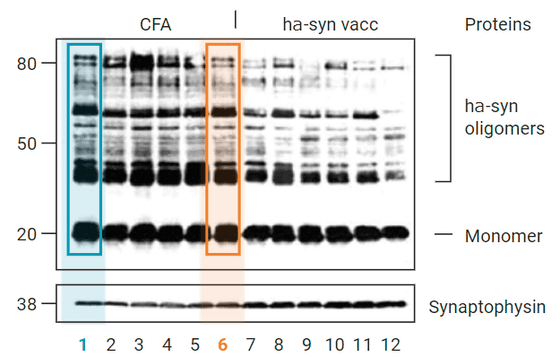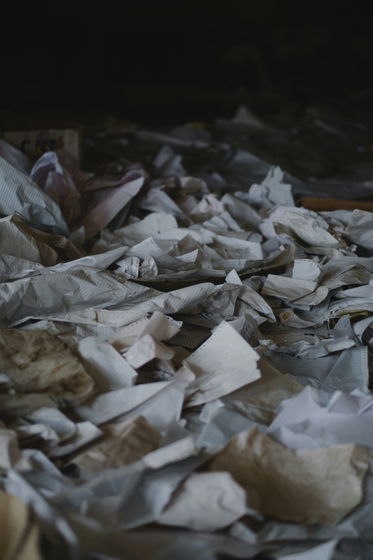Suspicion of image falsification in a paper by renowned neuroscientist and director of the National Institute on Aging, Eliezer Masria, raises doubts about a highly cited paper on Alzheimer's and Parkinson's disease

The journal Science has pointed out that images may have been faked in hundreds of papers by Eliezer Masria, a renowned neuroscientist and director of the National Institute on Aging (NIA), one of the 27 research centers of the National Institutes of Health (NIH).
Did a top NIH official manipulate Alzheimer's and Parkinson's studies for decades? | Science | AAAS
https://www.science.org/content/article/research-misconduct-finding-neuroscientist-eliezer-masliah-papers-under-suspicion

Fraud, So Much Fraud | Science | AAAS
https://www.science.org/content/blog-post/fraud-so-much-fraud
In 2016, the U.S. Congress decided to pour a large amount of money into Alzheimer's research, and the NIA appointed veteran brain researcher Eliezer Masria as the primary leader of this effort. The NIA's neuroscience division, which Masria will lead, has a budget of $2.6 billion (about 370 billion yen) for fiscal year 2023, which is larger than the budget of the rest of the NIA combined.
'We are entering a 'golden age' of Alzheimer's research, and I look forward to helping lead the NIA in this exciting new era,' Masria said in a statement on the Alzforum online forum.
Dr. Masria, a physician and neuropathologist, has conducted research at the University of California, San Diego for decades and is an authority on Alzheimer's and Parkinson's disease. He has published about 800 research papers, many of which are about the mechanism by which Alzheimer's and Parkinson's diseases damage synapses, the connections between neurons.
The following table summarizes the types of papers that Masuriah is listed as a co-author on and the number of citations, which shows how influential he is in the field of Alzheimer's and Parkinson's disease.
・Paper on Alzheimer's disease
| Sub-fields | Total number of papers | World Rankings | Number of citations | World Rankings |
|---|---|---|---|---|
| Neurodegeneration | 43 | 2 | 6972 | 6 |
| Synaptophysin | 57 | 1 | 10610 | 1 |
| Synuclein | 89 | 2 | 12467 | 4 |
| Amyloid | 296 | 30 | 55273 | 9 |
| Synapse | 92 | 1 | 18130 | 2 |
| Neuropathology | 30 | 55 | 6170 | 10 |
| Mouse model | 139 | 6 | 21115 | 3 |
| Celebrolysin | twenty two | 2 | 576 | 2 |
・Paper on Parkinson's disease
| Sub-fields | Total number of papers | World Rankings | Number of citations | World Rankings |
|---|---|---|---|---|
| Neurodegeneration | twenty one | 9 | 3561 | twenty three |
| Synaptophysin | 6 | 1 | 1252 | 2 |
| Synuclein | 220 | 1 | 31106 | 3 |
| Amyloid | 26 | 3 | 3460 | 6 |
| Synapse | 17 | 7 | 908 | 38 |
| Neuropathology | 124 | 1 | 13635 | 1 |
| Mouse model | 139 | 6 | 21115 | 3 |
| Celebrolysin | twenty two | 2 | 576 | 2 |
As mentioned above, Dr. Masria is one of the most highly cited scientists in his field, and his work on alpha-synuclein , a protein linked to Alzheimer's and Parkinson's disease, continues to impact basic and clinical science.
But over the past two years, doubts have been raised about Masria's papers. Science's investigation has found that many of Masria's studies at UC San Diego and the NIA contain numerous obviously fabricated 'Western blots' (images used to show the presence of proteins) and 'micrographs of brain tissue' that were improperly used in Masria's papers and those cited by them.

In a paper published in 2015 by Masuriah on cerebrolysin, a drug used to treat Alzheimer's disease, brain tissue images of normal mice and mice engineered to overexpress a mutant form of the tau protein were compared. The paper compared the degree of brain damage in normal mice (Non-tg) and mutant mice (3RTau mut tg), but Science pointed out that the brain tissue images of young normal mice (green frame) and old mutant mice (red frame) were unnaturally similar, with most parts being identical (yellow). Therefore, it has been pointed out that Masuriah may have copied and misused the images.

Other research that may have involved fake images was published in 2005 by Masria and Dale Schenk, founder of biotechnology company Prosena, about the accumulation of alpha-synuclein in the brain, which has been linked to the debilitating physical and cognitive symptoms of Parkinson's disease.
Science noted that five images in the paper may have been altered in ways that could affect the conclusions. Specifically, Science noted that lanes 1 and 6 in a Western blot showing proteins found in the brain tissue of two control mice are identical. To make lanes 1 and 6 look different, Masria may have intentionally altered the brightness of the two images. It should be noted that even using the same experimental conditions, each lane should look different.

This paper also forms the basis of the anti-alpha-synuclein antibody drug manufactured by Prosena, which is expected to be a treatment for Parkinson's disease.
A paper published in The New England Journal of Medicine in 2022 investigating Prosena's anti-alpha synuclein antibody drug showed that the anti-alpha synuclein antibody drug was ineffective compared to a placebo group (untreated group) in 316 Parkinson's disease patients. It also revealed that subjects who were injected with the anti-alpha synuclein antibody drug were far more likely to experience side effects such as nausea and headaches than those in the placebo group. At the time of writing, Prosena was testing the anti-alpha synuclein antibody drug on 586 Parkinson's disease patients.

After Science reported on Masria's allegations, a group of neuroscientists and forensic analysts published a report that examined 132 of Masria's research papers published between 1997 and 2023. The report ultimately concluded, 'In our opinion, this unusual pattern of data raises credible concerns about research misconduct and calls into question a significant number of scientific studies.'
The researchers stressed that they are not accusing Masria or his colleagues of fraud or wrongdoing, and that some of the supposed forgeries may simply have been the result of errors. When images are prepared for publication, 'harmless visual artifacts that resemble inappropriate alterations can sometimes occur.'
Eleven neuroscientists who worked with Science to review Masria's paper said that while they had not personally verified all instances of potential misconduct, the vast majority of the questionable studies could not be explained by careless human error or publication anomalies.
'These papers span a long period of time and have had a huge number of collaborators and co-authors, so the possibility of 'potential misconduct' by unscrupulous postdocs or collaborating scientists seems unlikely here,' said Tim Greenamire, director of the University of Pittsburgh's Institute for Neurodegenerative Diseases, one of 11 neuroscientists who worked with Science to review Masria's papers. 'While it is unclear whether Masria fabricated the images himself or someone else did so on his behalf, it is difficult to believe that he was unaware of this fact.'

Masria has remained silent about the allegations against him at the time of writing. However, the NIH released a statement (PDF file) saying it had found evidence of misconduct in two papers in which Masria 'falsified and fabricated figures, including reuse and relabeling.' In the statement, the NIH said, 'Masria is no longer the director of the NIA's neuroscience division,' but did not disclose his employment status.
Through an NIH spokesperson, Masria and NIA Director Hodes declined to answer detailed questions, provide interviews or comment on the documents, Science reported. NIH Director Monica Bertagnoli also declined to comment on the allegations.
Alan Leshner, who led two NIH institutes and served as president of AAAS (the publisher of Science) until 2015, said that as a division chief, Masuriah is an influential figure in NIA neuroscience grants. The institute selects grants based on scores given by the 'research sections,' but the director or division chief can fund projects that he or she prioritizes over competing projects with higher scores, such as research on amyloid, a brain protein associated with Alzheimer's disease. 'There's no question that in most cases, division chiefs are viewed as people with the ability to determine priorities,' Leshner explained.
While there is no evidence that Masria mismanaged the NIA's neuroscience division's budget or directed it toward research backed by questionable data, Science points out that the NIH statement still leaves many important questions unanswered.
Related Posts:
in Science, Posted by logu_ii







